Recent Articles
Popular Makes
Body Types
2017 Honda Clarity Fuel Cell Vehicle Road Test and Review
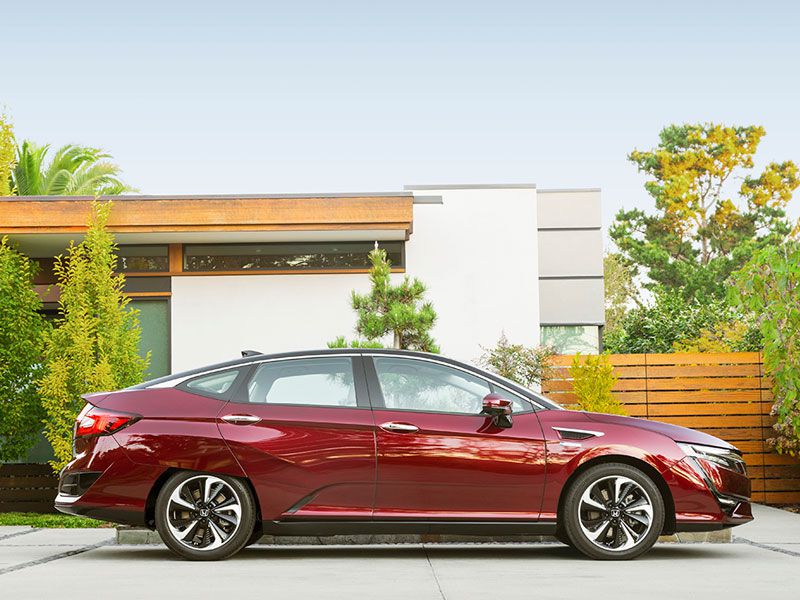
2017 Honda Clarity exterior profile parked ・ Photo by Honda
The 2017 Honda Clarity is a sedan on the generous side of midsize. But way beyond that, it’s the latest creation to emerge from Honda’s fuel cell vehicle program. Imagine a car that runs on electricity, but whose fuel source can be replenished in five minutes at a filling station. That’s the Clarity. The fuel is hydrogen, the most abundant element in the universe, incidentally. It is converted into electricity, which then propels the car. The only emission is water vapor. Unfortunately, not many places sell hydrogen to the public. And most of those are in California. So the Clarity is only available in the Golden State for the time being, while the chicken-and-egg situation of supply and demand continues to be addressed.
Pricing
The 2017 Honda Clarity is not for sale. But it can be leased. The deal is $2,868 down and $369 a month (plus tax) for 36 months. The mileage allowance is a generous 20,000 miles a year and what’s even more generous is that Honda will foot the hydrogen bill, up to $15,000. Customers even have 21 days’ worth of luxury car rental as well as 24/7 roadside assistance. A state rebate of $5,000 is also passed on to the customer. Assuming that topping up a not-quite-empty tank once a week costs about $90, that works out to $14,040 over the course of the lease. So a Clarity driver may never need to pay for hydrogen fuel.
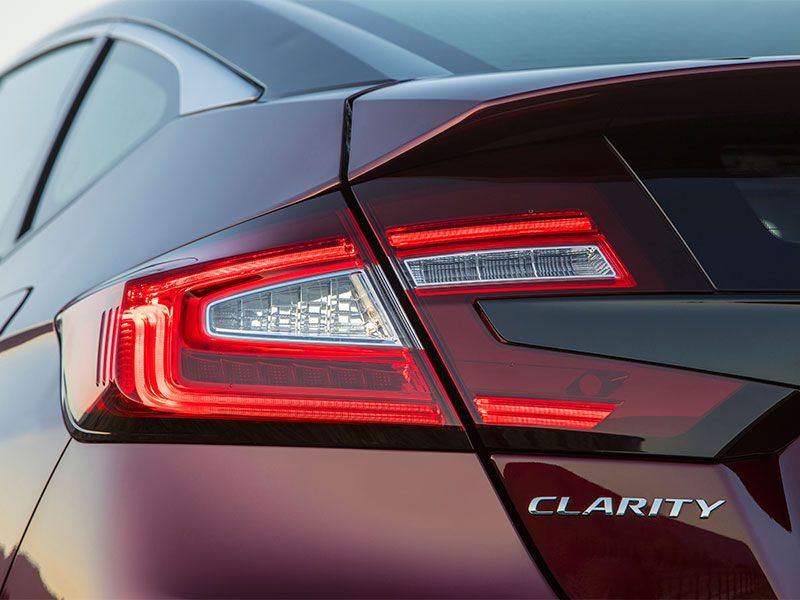
Photo by Honda
Equipment
The Clarity is stocked with virtually everything Honda has to offer. This includes a sustainable plant-derived upholstery material that works well with the real leather seating surfaces, power-adjustable and heated front seats with driver’s-side memory settings, navigation, head-up display, digital instrument display, 8-inch infotainment screen, special-design 18-inch alloy wheels, LED lighting, Apple CarPlay, Android Auto, and a special pocket behind each front seat that can house a rear passenger’s smartphone. There’s a smartphone app, naturally, allowing the user to pre-heat/cool the cabin before setting off, check fuel level and range, and find the nearest hydrogen station. Owning/driving the Clarity requires no compromise other than the need to be within driving distance of a fuel source.
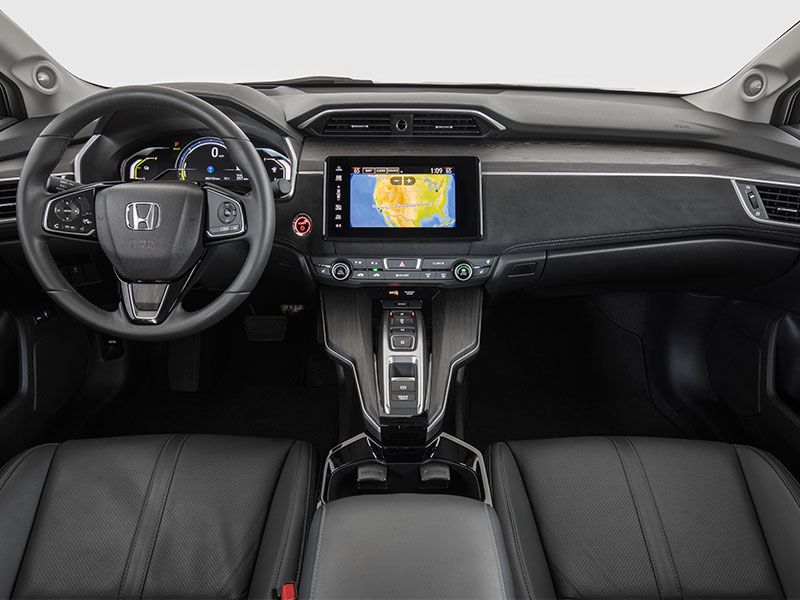
Photo by Honda
Engine and Fuel Economy
There’s no combustion engine, obviously, but the electric motor develops 174 hp and 221 lb-ft of torque. This is not a light car (4,134 pounds; a 2017 Accord Sport’s curb weight is 3,369 pounds), but that muscle is sufficient to get the Clarity moving quickly, with a progressive power delivery. The EPA estimates a miles-per-gallon equivalent of 69 MPGe city, 67 MPGe highway and 68 MPGe combined. It puts range at 366 miles, the best achieved by any fuel cell vehicle to date; that might be optimistic in the real world, though. If anyone can use a fuel pump, they will quickly get to grips with the hydrogen refill process at a filling station.
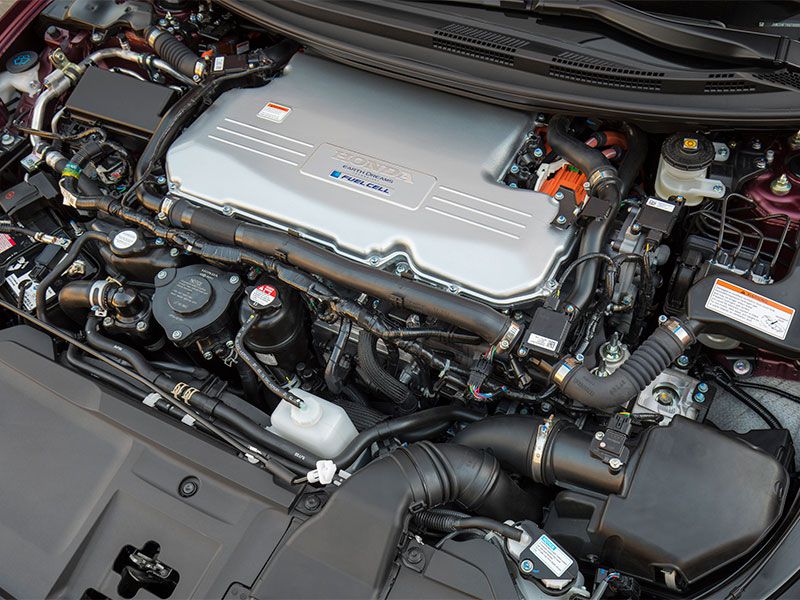
Photo by Honda
Fuel Cells Made Simple
A fuel cell is housed in a metal box, inside of which are special membranes. When hydrogen passes through them, it sets off a chemical reaction which creates electricity. Oxygen is also required, so the Clarity has an air inlet at the front. Honda is a leading proponent and developer of fuel cell vehicle technology. Over the years, the company has developed and improved fuel cells to be smaller and more efficient so they can now fit under the hood of a regular-styled car along with an electric motor. Energy is stored in a lithium-ion battery. Although an easy way to make hydrogen is through natural gas, that’s clearly not the greenest. Other methods include using electricity derived from solar or wind power.
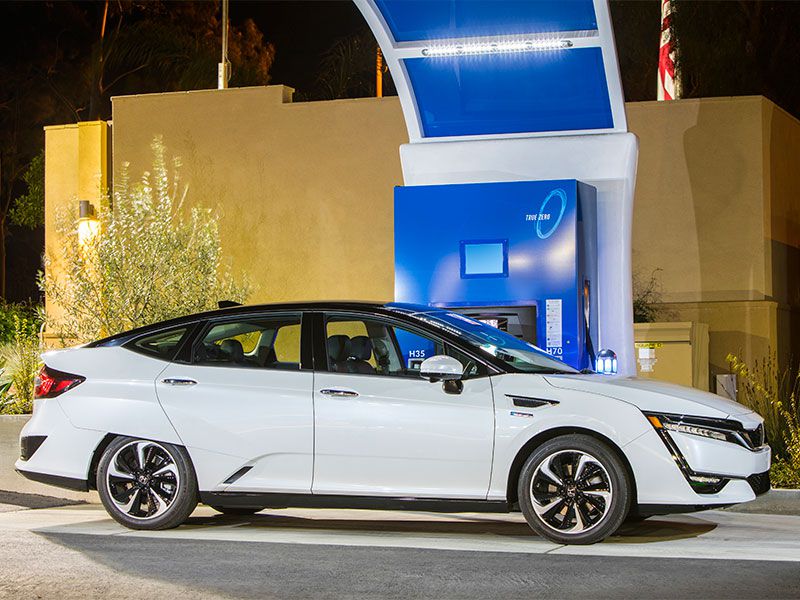
Photo by Honda
Interior Design
Climb into those well-padded leather-covered seats, run a hand over the simulated suede (made from recycled polyester) and smooth wood trim of the dashboard, and Honda may not be the first name that springs to mind. More like Acura, the company’s luxury marque. The center console is raised, with the effect of cocooning the front occupants while also providing some stowage space underneath. There’s no gearshift lever for the single-speed transmission, just a row of buttons. Overall, the controls are easy to navigate, and the dashboard keeps clutter to a minimum. One eccentric note. A small “window” above the three back seats looks through to the rear glass, which improves rearward vision, but also gives the impression there’s a floating shelf.
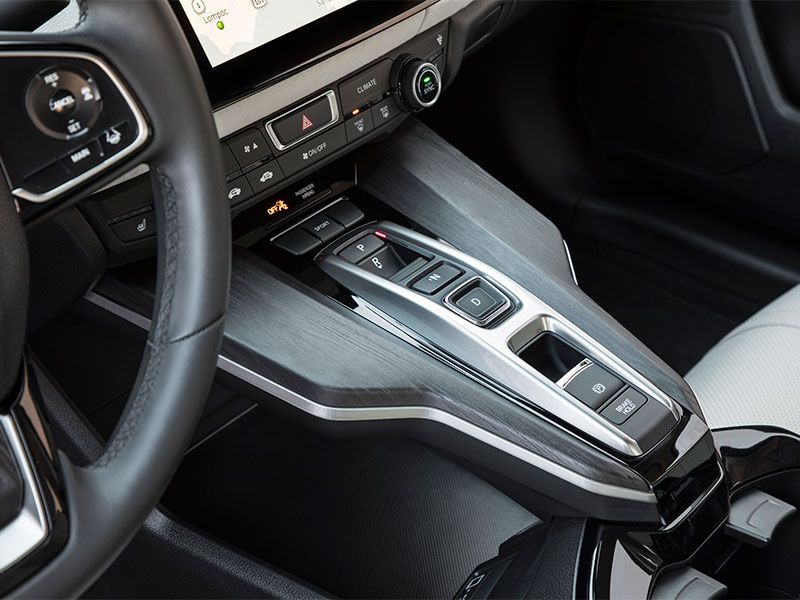
Photo by Honda
Exterior Design
Perhaps it’s the need to be as aerodynamic as possible, but the Clarity looks sleeker than the rest of Honda’s portfolio. While something like the Accord appears to have been styled by committee, with people adding their two cents even if it doesn’t work well with someone else’s two cents, the Clarity has more, um, clarity of vision. The quest for aero efficiency results in a high trunk line, so the car looks like it might be a hatchback, but it’s not. Small vents near each wheel provide “air curtains” that reduce turbulence in those areas — a world first. Honda has not published a drag coefficient figure, but it’s clear that considerable ingenuity has gone into the design.
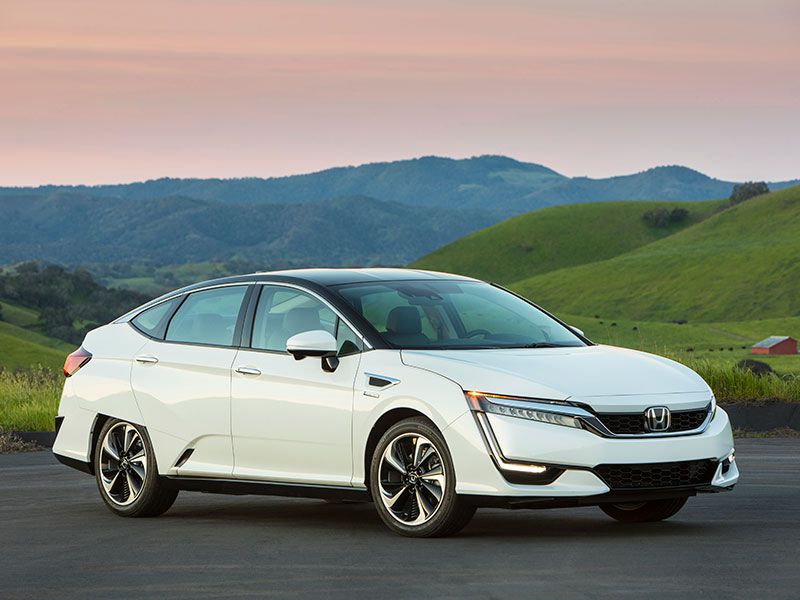
Photo by Honda
Comfort and Cargo
The seats are well shaped and supportive. Rear passengers also enjoy plenty of space, although anyone taller than six feet might prefer to shout “shotgun.” Everyone in the car benefits from an air quality management system that includes an allergy-free deodorizing filter. And the silent treatment — the Clarity uses acoustic glass and other sound-insulating materials. Rather than a single hydrogen tank, the overall packaging worked better with two tanks of differing sizes (there’s still a single refill point, though, so this shouldn’t be a problem). The larger of the pair encroaches upon cargo space, leaving 11.8 cubic feet, which is still enough to accommodate three sets of golf clubs. There’s also an under-floor stowage area in the trunk.
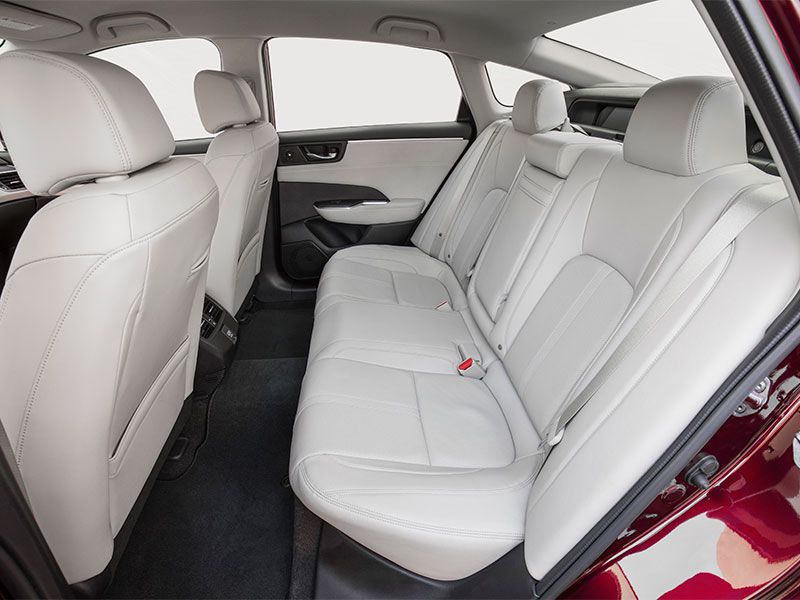
Photo by Honda
Safety
The Clarity starts off with a frame that incorporates high-strength steel at crucial points. The electric motor and fuel cell are also constructed to withstand impacts. Hydrogen fuel is stored under high pressure: 10,000 psi. To ensure structural integrity, the two tanks are made of aluminum, encased in carbon fiber, and then covered with thermal “sleeves.” Hydrogen is not particularly flammable and if there was a leak, it would probably just dissipate into the air. The full complement of airbags includes one for the driver’s knees. Honda Sensing is the collective term for an array of advanced safety features that include adaptive cruise control, forward collision mitigation and lane-keeping assistance. It’s standard equipment in the Clarity.
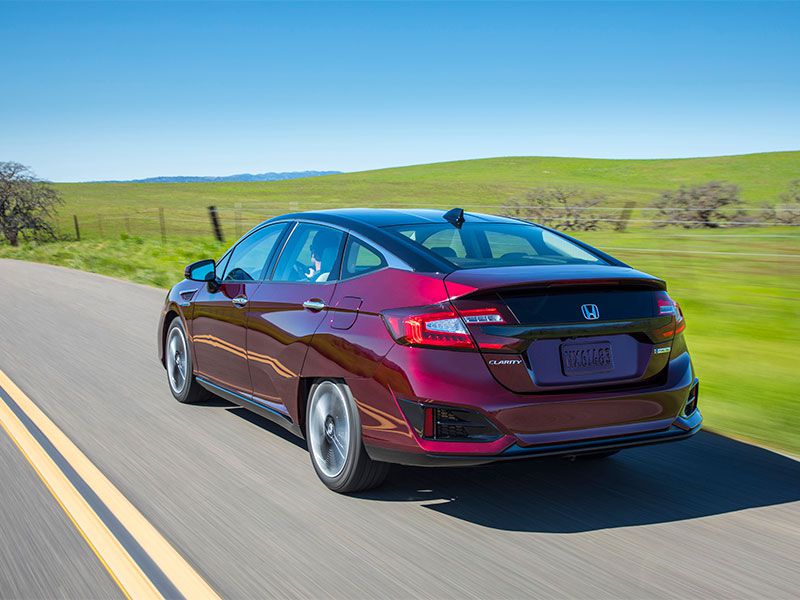
Photo by Honda
Performance
The usual audible clues to speed — engine noise, exhaust blare and wind whoosh — are missing. The Clarity accelerates as if it were in a science fiction movie, with subdued efficiency. It takes a little getting used to and it’s probably smart to keep an eye on the speedo while that’s happening. Top speed is 103 mph, fast enough for anyone not being chased by James Bond. A sport mode sharpens throttle response and increases brake energy regeneration on downhill stretches, but regular mode works well enough. The car uses low rolling resistance tires. Perhaps that hushed road noise might be even quieter with regular rubber. No complaints, though, with how they grip. Handling manners are stable and composed.
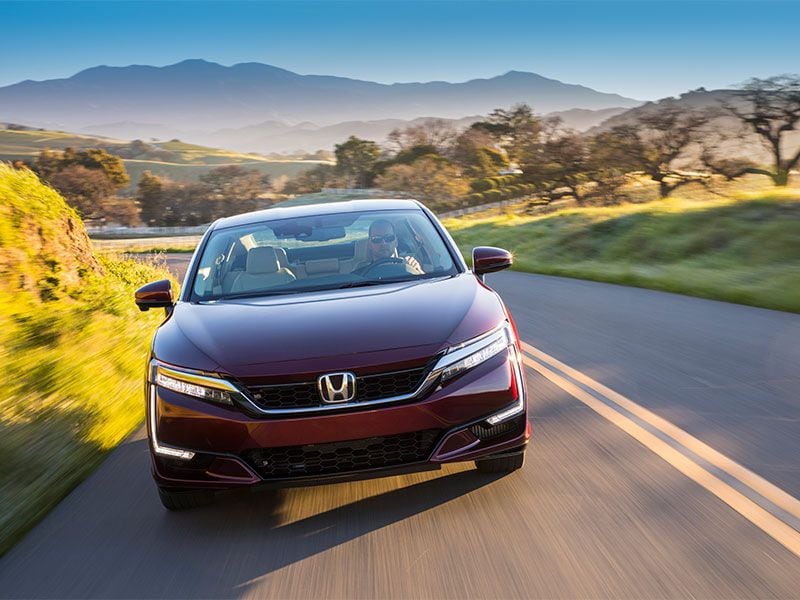
Photo by Honda
Final Thoughts
The 2017 Honda Clarity is not the company’s first fuel cell vehicle, nor is it the first to have that name. But this car is the first of three to be launched under a new Clarity sub-brand. The other two, coming soon, are a plug-in hybrid and an all-electric car. As long as a potential customer has regular access to a hydrogen supply (there are 16 stations in southern California and 10 in the Bay Area, with more being planned) and has the kind of driving habits that keep within range of these stations, then the Clarity could be a sweet deal — an almost luxury car for a fraction of the price one might pay for a conventional equivalent.
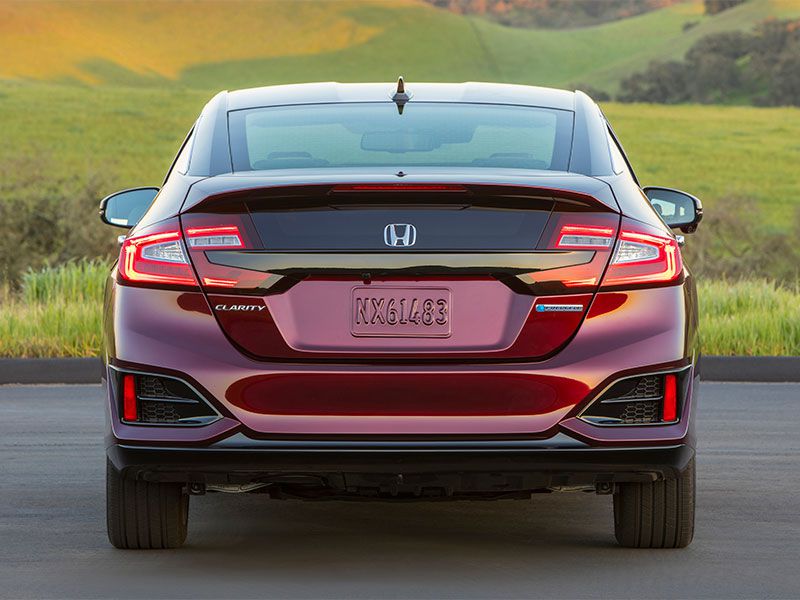
Photo by Honda